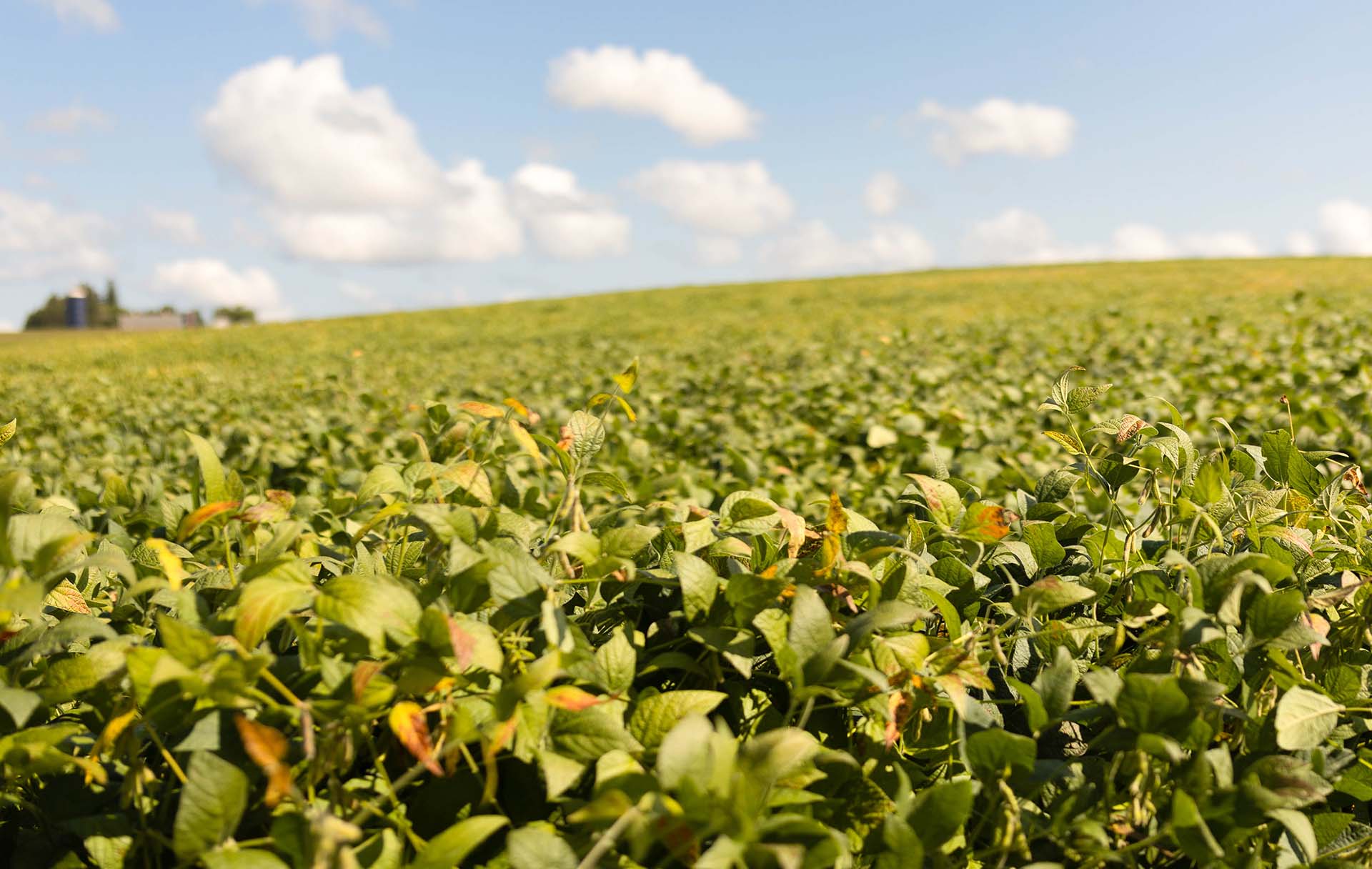
(Photo: Iowa Soybean Association / Joclyn Bushman)
Crop quality concerns to consider before harvest
September 12, 2024 | Kriss Nelson
Could the recent hot and dry weather have accelerated the harvest and compromised the yield? Only time will tell.
As crops are quickly maturing and combines are beginning to roll, Shane Beck, Iowa Soybean Association (ISA) research agronomist, provides tips for farmers to consider.
Late-season pests
Treating diseases like white mold and weeds is no longer feasible this late in the season, but it’s crucial to be mindful they could still affect yields not only this year, but in years to come if not mindfully managed.
“Once you have harvested a field that had disease or weed pressure, it might be a good idea to blow that equipment off in the field to avoid spreading weed seeds and the inoculant to other fields,” says Beck. “This is a good way to help limit the amount of disease and weeds you spread across your farms.”
Sudden Death Syndrome (SDS) has been causing patches of soybeans to die sooner than most of the field.
“This could be a challenge,” says Beck. “If you have patches of SDS in the field, which killed those plants and they are drying down quicker than other areas of your field that aren’t matured yet, it could mean those diseased areas might experience a lot of shattering during harvest.”
Green stem disorder
Now is the time to evaluate soybean fields for green stem disorder. In this case, stems remain green and moist even when pods and seeds are dry.
“Walk through fields and do a pod check. Do they break open easily? Are the soybeans in the 12 to 14 percent moisture range? If they are, and the stems are green and still have petioles hanging on, it is best to get those soybeans harvested. You don’t want to wait for a freeze to further dry those plants down. You might lose a lot of yield by waiting.”
Harvesting green stem soybeans, Beck advises will mean making adjustments in order to be able to feed the tougher stems through the combine and going at a slower pace.
Check for corn stalk quality
September may typically bring concerns about ear rot, however, in Beck’s opinion, this may not be an issue this year because of recent dry conditions.
However, stalk lodging could be a problem, especially in those areas of high-pressure corn rootworm feedings earlier in the season.
“Farmers need to be checking corn fields, and if they find any stalk quality concerns, they need to prioritize those fields to be harvested first,” says Beck.
When checking corn for stalk rot, Iowa State University Extension suggests trying the pinch test and push test methods.
Pinch test
- Check stalk firmness by pinching the lower internodes near the ground between your thumb and forefinger
- Be concerned when stalks crush easily
Push test
- Push the plant at shoulder height approximately 30 degrees from vertical
- Be concerned when plants pinch over or when plants fail to snap back to vertical
Regardless of the method chosen, check a minimum of 100 plants per field, preferably by evaluating at least 20 plants in five different areas. If more than 10% of plants in a field crush easily or lodge, this indicates stalk rot may be an issue.
If you have any questions, the team of ISA’s
research agronomists are available to assist you
Back